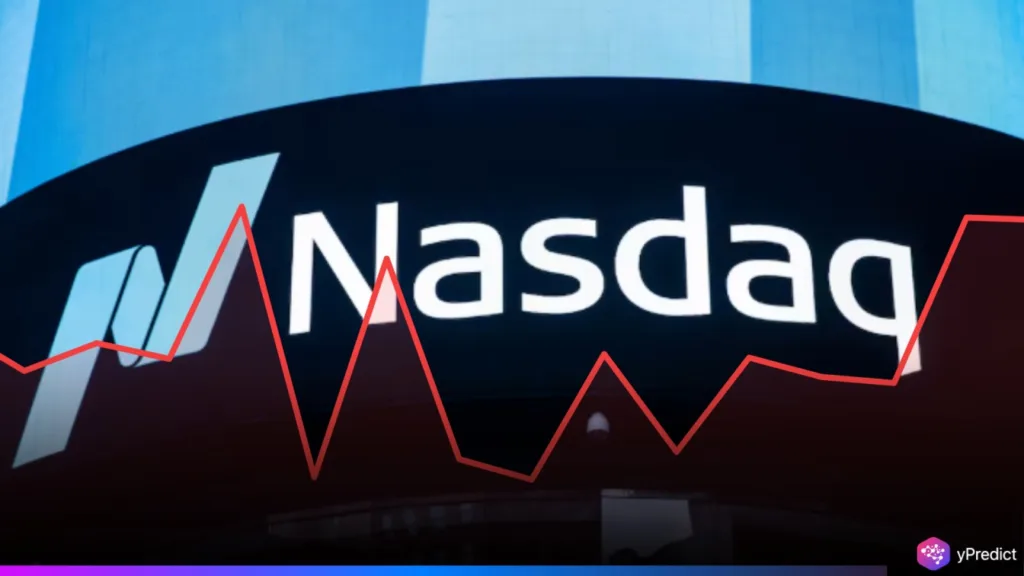
The S&P 500 monthly gain hit 6.2% in May 2025, its strongest since November 2023, while the Nasdaq Composite soared 9.6%, driven by strong corporate earnings and tech sector strength. This impressive S&P 500 monthly gain was fueled by strong corporate earnings, especially in the technology sector, alongside moderating inflation data that bolstered investor confidence. This performance came despite persistent geopolitical uncertainties, including renewed trade tensions between the United States and China and uncertainty surrounding Federal Reserve policy.
May Brings Back Bullish Momentum for S&P 500
Markets initially fell on Friday as President Donald Trump accused China of violating trade pact rules on his Truth Social platform. He also proposed harder actions against Beijing, such as increasing taxes on steel and aluminum. However, losses were reduced after he adopted a more conciliatory tone, expressing optimism about prospective discussions with Chinese President Xi Jinping.
Reuters reports that the Dow Jones Industrial Average (DJI) rose 54.34 points, or 0.13%, to close at 42,270.07. The S&P 500 (SPX) dipped 0.48 points, or 0.01%, to 5,911.69, while the Nasdaq Composite (IXIC) fell 62.11 points, or 0.32%, to 19,113.77. Despite the muted finish, the S&P 500 ended the week higher, climbing within 4% of its February all-time high. For May, the S&P 500 advanced 6.2%, and the Nasdaq surged 9.6%, marking both indexes’ strongest monthly performance since November 2023.
This marks a crucial turning point in U.S. equity markets after a volatile first quarter. Investor confidence appears to be regaining footing, even as concerns around tariff policy, Federal Reserve direction, and geopolitical uncertainties remain.
The Nasdaq’s performance was particularly noteworthy, with outsized gains from mega-cap tech stocks. Nvidia surged nearly 30% in May after its quarterly earnings crushed analyst expectations, further reinforcing the AI narrative that has dominated market psychology since 2023. Tesla shares also spiked 23% on plans to unveil its long-anticipated robotaxi fleet by early 2026.
Earnings Strength Offsets Tariff Shock
Mid-month optimism was briefly challenged after a federal court upheld most of Trump’s China-era tariffs, reversing a short-lived agreement between the U.S. and China to suspend select duties. Despite this, Wall Street held its ground, focusing on resilient economic data and earnings momentum from industry leaders like Alphabet, Broadcom, and Microsoft.
Strong quarterly results across the board helped reinforce bullish sentiment, particularly in the tech and communication sectors. The broader S&P 500 also benefited from a rebound in financials and select consumer discretionary names.
Fed Policy Watch: Will S&P 500 Monthly Gains Hold?
While corporate earnings played a central role in May’s rally, investors are now closely watching the Federal Reserve. April’s core personal consumption expenditures (PCE) index, the Fed’s preferred inflation gauge, showed a modest month-over-month increase, but the annual rate edged down to 2.7%, strengthening hopes that the Fed may hold interest rates steady through the summer.
The upcoming U.S. jobs report and commentary from Fed Chair Jerome Powell will be pivotal in shaping rate expectations for the second half of 2025. Markets are currently pricing in a low probability of additional hikes this year, though the stance remains data-dependent.
Economic Data Adds Uncertainty to S&P 500 Monthly Gain
In terms of economic developments, consumer expenditure increased 2.1% in April compared to 2.3% in March. The core PCE price index, the Federal Reserve’s favored inflation indicator, reported lower-than-expected results, potentially indicating a rate cut in September. The benchmark 10-year Treasury yield was 4.418%, marking a slight decline in yields.
However, customer sentiment remained unchanged. A closely monitored confidence indicator remained steady in May after barely recovering from its historically low preliminary score earlier in the month. Meanwhile, the U.S. goods trade gap decreased significantly in April, probably due to lower imports brought on by higher tariffs.
While investors found some relief in May’s rebound, the overall market mood remains fragile. With U.S.-China trade talks in limbo and legal battles over tariffs unresolved, uncertainty continues to overshadow economic and earnings fundamentals.







